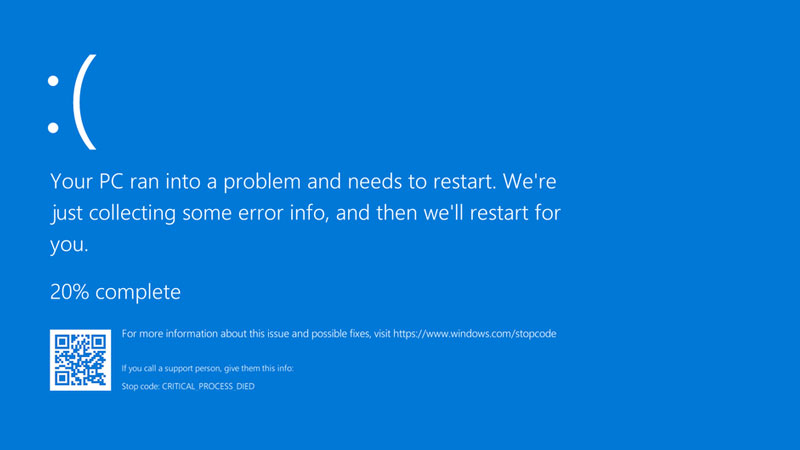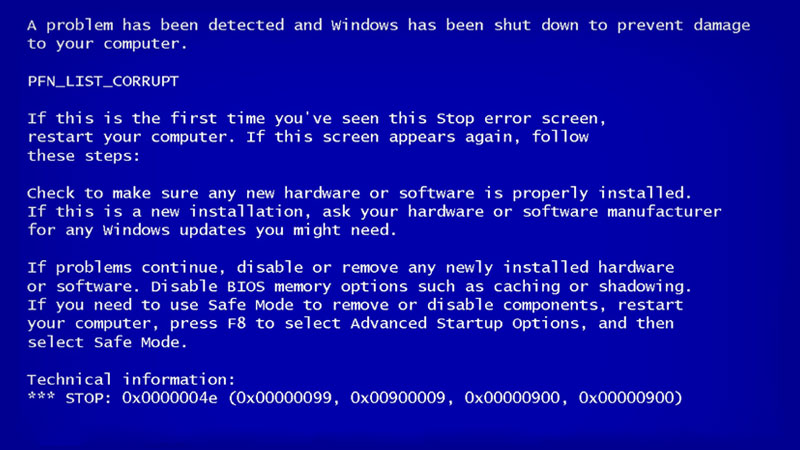
The infamous ‘Blue Screen of Death’, also known as BSoD, has earned its negative reputation through many years of happening at the worst time possible. It can be the result of many different things. They all have one element in common though, if a process goes rogue and if windows were to continue usage, then damage to data, files, or even the hardware itself would be possible. To protect this from happening, Microsoft has devised interrupts to ‘kill’ such a process. Windows operating system usually displays a blue screen with a ‘fatal error’ message. Hence the name.

Blue Screen can be caused by missing or corrupt dependencies that windows relies on to work, unstable drivers or malfunctioning hardware, ranging from overheating to being pushed beyond it’s limits. Bluescreens caused by these different issues will require different fixes to be solved. A service that is relied on crashing will cause a BSoD, but won’t cause any long-term harm and can be fixed simply by restarting the computer. However, a processor being pushed to its limits, will cause slowdowns and even BSoD, and if left unfixed will cause permanent harm to the processor, the motherboard or other adjacent components.

Blue Screen may occur rarely, and if it just happens once then it is nothing to worry about. Just restart your computer, if it does not restart itself. However, if the blue screen starts to occur frequently, then there may be an underlying issue with Windows operating system that needs to be looked at.
Although BSoD has a negative rap, the fact is that it is a friend. It is designed to save us from costly repairs and, at times, longer downtime. It is a safety mechanism in Windows operating system. Whatever the problem is, it is always practical to not to ignore repetitive BSoDs. Try to find the root cause and take remedial action. After all, a stitch in time saves nine!